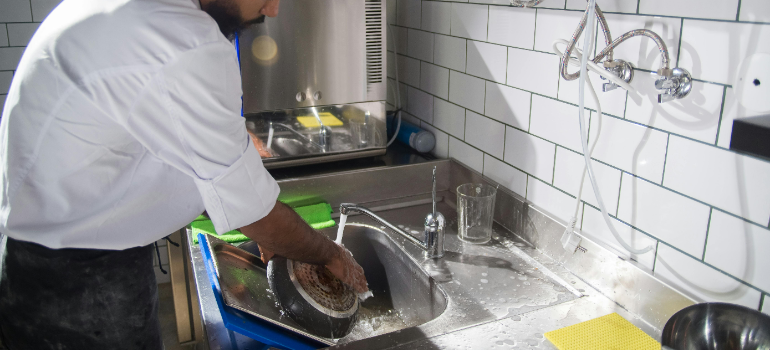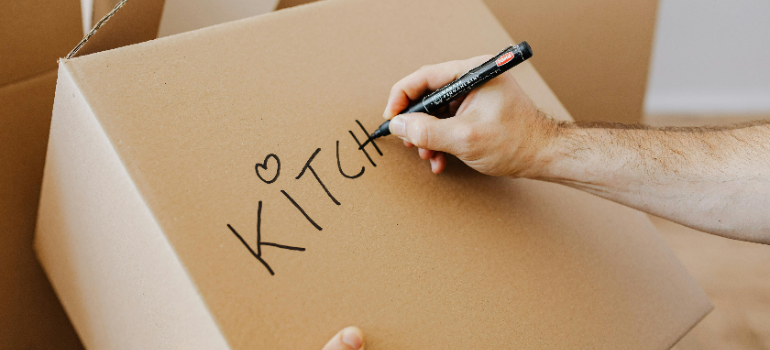Moving heavy stoves, chillers, and dishwashers always tests strength and patience. One wrong step can dent panels, crack hoses, or void an expensive warranty. Even worse, disruption steals sales and frustrates hungry customers. Therefore, smart owners trust trained crews who bring dollies, ramps, and proven skill. Those experts reduce downtime, protect equipment, and control moving costs. Furthermore, they navigate permits, parking, and logistics across the region. For added peace, consider moving companies Bay Area that specialize in commercial kitchens. This guide lists key mistakes to avoid when moving restaurant equipment and keeps stress low. Read on and move forward safely.
Rushing the Move Without a Plan
First, rushing invites confusion and accidents. A thoughtful timeline keeps every task clear and orderly. Schedule cleaning, disassembly, loading, travel, and setup with firm start times. Next, reserve elevators, loading docks, and parking spots well in advance. Also, share the timeline with chefs, suppliers, and contractors so everyone stays aligned. Then confirm power shutoff times to avoid sudden surprises during removal. Finally, hire long distance movers Bay Area if the new site sits miles away. Proper planning transforms a frantic day into a steady, predictable workflow.

Forgetting to Measure Doorways and Hallways
Many teams forget simple measurements and pay a high price later. Before anything moves, record the width and height of each doorway and hallway. Include turns, service lifts, and curb ramps in your notes. Then compare those figures with the appliance dimensions on their spec sheets. If numbers clash, remove doors or choose a different exit path. Add guards for the walls. These careful checks reduce lost time and lower repair bills.
Not Disassembling What You Can
Many appliances shrink in size once you remove detachable components. So, slide out racks, trays, burners, and shelves before lifting the frame. Next, unscrew fragile knobs, handles, and glass doors to avoid cracks during transport. Place each part in padded boxes and add foam between layers. Furthermore, seal bags of bolts and screws, then tape them to matching units. Clear labeling speeds reassembly and prevents missing pieces. For expert support, call restaurant equipment movers who know these steps well. Their guidance saves time and safeguards parts.
Skipping Proper Cleaning and Draining
Grease, water, and food particles cause a mess and corrosion during travel. Therefore, clean ovens, grills, and fryers before the crew arrives. Drain dishwashers, steam tables, and ice machines until the lines run dry. Next, wipe surfaces with food‑safe sanitizer and allow air drying. Also, remove filters and drip trays, then pack them separately in sealed bags. Leaking liquids ruin boxes and stain truck floors. Remember the mistakes to avoid when moving restaurant equipment while cleaning. Clean gear travels lighter and reaches the new kitchen ready.

Using the Wrong Packing Materials
Packing mistakes shatter doors and dent costly frames. Thin cardboard bends under a double‑door fridge or a heavy convection oven. Instead, pad corners with foam and wrap bodies in thick blankets. Next, secure the wrap with strong ratchet straps that resist shifting loads. Moreover, build crates for glass displays, warming lamps, or screens. Fill gaps inside crates with molded foam or inflated air pillows. Finally, trust movers Santa Clara to supply industry‑grade packing gear and advice. Their materials safeguard investments and cut costly replacement orders.
Ignoring Manufacturer Guidelines
Manuals rarely sit near loading docks, yet they hold vital instructions. Read them ahead and mark critical steps with sticky notes. Some ovens need workers to lock internal racks with shipping bolts before any tilt occurs. Others require draining coolant past a set line to prevent foaming. Moreover, many manufacturers supply transit covers that shield panels and knobs. Follow each step, and you keep warranties valid for claims. Skipping any step may void coverage and raise repair expenses later. Therefore, keep guides handy for checks.
Not Labeling or Inventorying Equipment
Missing parts slow reopening and frustrate chefs on day one. Thus, build a detailed spreadsheet before anything leaves the kitchen. Include serial numbers, model names, and destination rooms for each item. Next, print bold tags and stick them on cables, hoses, and gas lines. Insert color‑coded ties on cords so installers can match outlets quickly. Also, take photos of every piece before loading for insurance proof and keep them on a drive so they don’t get lost. Update the list after each stage and confirm nothing stays behind. Good records cut claims time, speed health inspections later.

Trying to DIY Without the Right Help
Shifting a six‑burner range without skill endangers staff and property. Moreover, worker injuries bring compensation claims and lost shifts. Think about hiring crews who own lift‑gate trucks, pallet jacks, and dollies. Those tools move loads safely down ramps and across uneven sidewalks. Next, verify that the mover carries cargo insurance and commercial liability coverage. Check crew training certificates and recent client reviews. Such diligence helps prevent injuries on a moving day and protects your license. Finally, assign a manager to oversee loading and answer crew questions.
Not Securing Equipment in the Moving Truck
Equipment can shift during sharp turns and sudden stops. Therefore, load heavier units against the truck bulkhead for balance. Next, use load bars and straps to lock items in place. Add non‑slip mats under wheels to stop rolling on inclines. Moreover, secure doors with stretch wrap so they stay shut during bumps. Check tie‑downs at every rest stop and adjust loose straps immediately. This vigilance addresses mistakes to avoid when moving restaurant equipment inside vehicles. Secure loads protect walls, floors, and engines from crushing impact.
Underestimating the Time It Takes to Reinstall and Test
Arrival does not mean the work ends. Testing demands skilled technicians. First, allocate enough hours for gas, water, and electrical hookups. Then, level appliances and confirm feet sit flat. Next, follow a testing checklist to catch faults early.
- Check gas lines for leaks with soapy water.
- Calibrate oven thermostats to required service temperatures.
- Verify refrigerator reaches safe holding temperature within three hours.
Moreover, train staff on the new positions of power switches and safety cutoffs. Finally, schedule health inspector visits after every key system passes checks.
Have a Perfect Restaurant Moving Experience
Planning, preparation, and expert help keep expensive kitchens safe during transport. You know the mistakes to avoid when moving restaurant equipment. Therefore, create timelines, measure paths, secure loads, and hire trained crews. Consequently, your gear arrives intact, staff stay injury‑free, and guests enjoy service. Act now and move forward with confidence.


